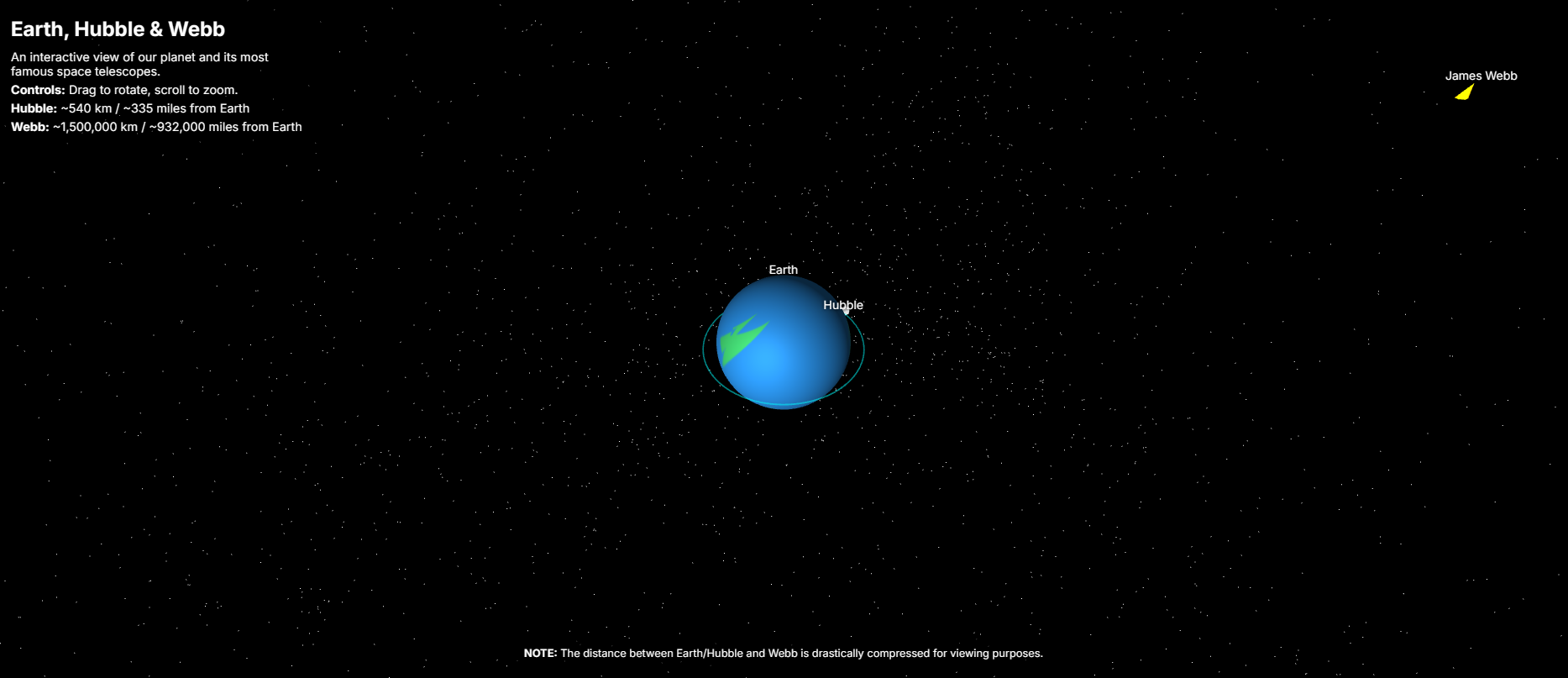Tale of Two Telescopes: Hubble and Webb's Vastly Different Orbits
The Hubble Space Telescope and the James Webb Space Telescope, while both revolutionary instruments for astronomical observation, occupy vastly different positions in space relative to Earth. This distinction in their orbital paths is fundamental to their respective missions and capabilities.
The Hubble Space Telescope remains in a close embrace with our planet, orbiting at an altitude of approximately 540 kilometers (about 335 miles). This places it in Low Earth Orbit (LEO), just above the densest part of Earth's atmosphere. This proximity has been a key advantage for Hubble, allowing it to be serviced and upgraded by astronauts on multiple occasions. However, its closeness to Earth also means its view can be periodically obstructed by our planet, and it is more susceptible to the faint glow of Earth's atmosphere.
In stark contrast, the James Webb Space Telescope operates at a much greater distance, about 1.5 million kilometers (approximately 932,000 miles) from Earth. It is positioned at a special gravitational balance point known as the second Lagrange point (L2). From this vantage point, Webb can maintain a stable orbit relative to the Earth and Sun, keeping both at its back. This orbital location is crucial for Webb's mission to observe the universe in infrared light. By keeping the Sun, Earth, and Moon behind it, Webb's sunshield can effectively block their heat and light, allowing the telescope's sensitive instruments to cool down to the frigid temperatures necessary for detecting faint infrared signals from the distant cosmos.
To put these distances into perspective, if the Earth were the size of a basketball, the Hubble Space Telescope would be orbiting just a few millimeters above its surface. The James Webb Space Telescope, on the other hand, would be located roughly 45 meters (about 148 feet) away. This significant difference in orbital distance highlights the distinct operational environments and scientific objectives of these two powerful observatories.
 |





